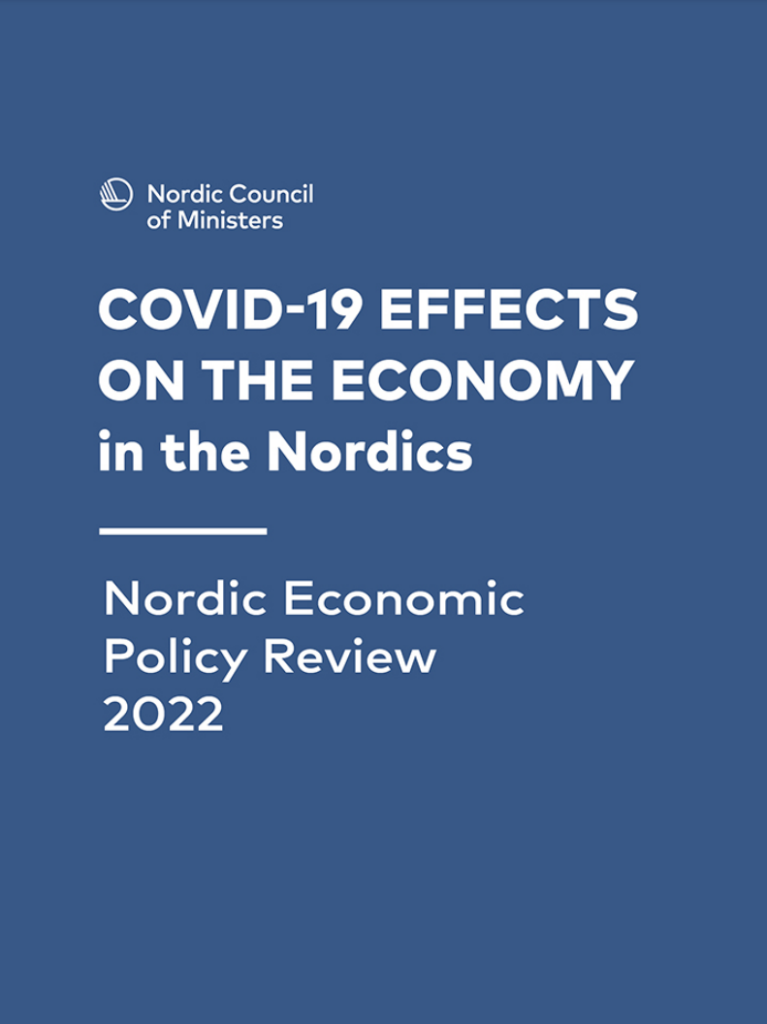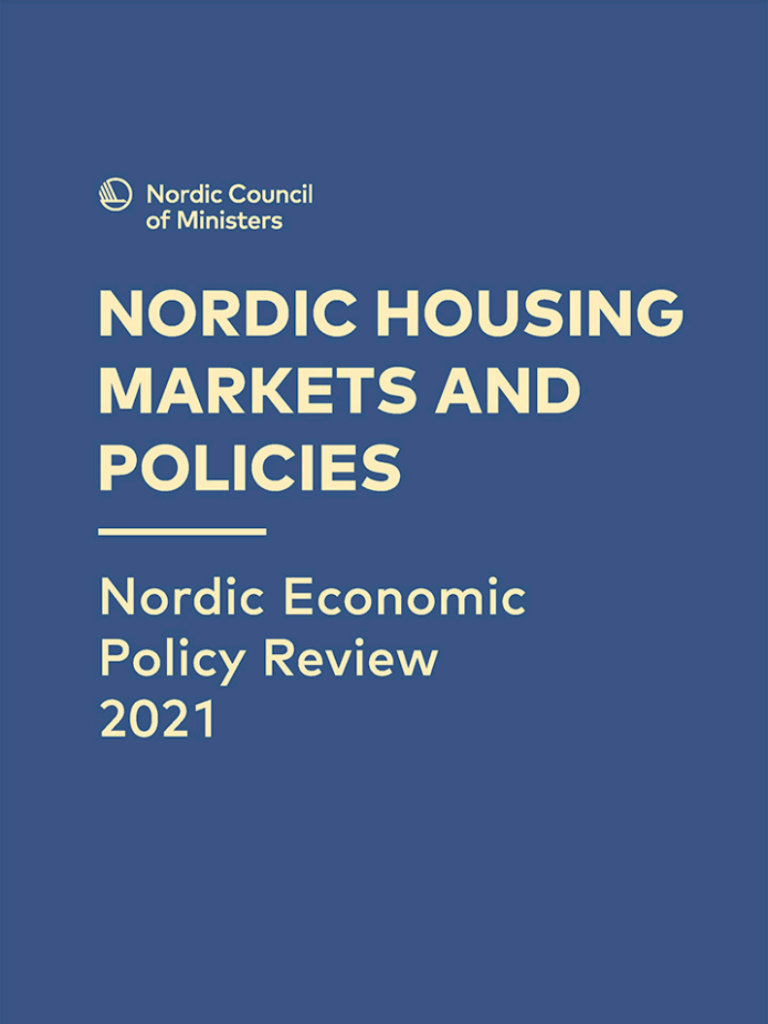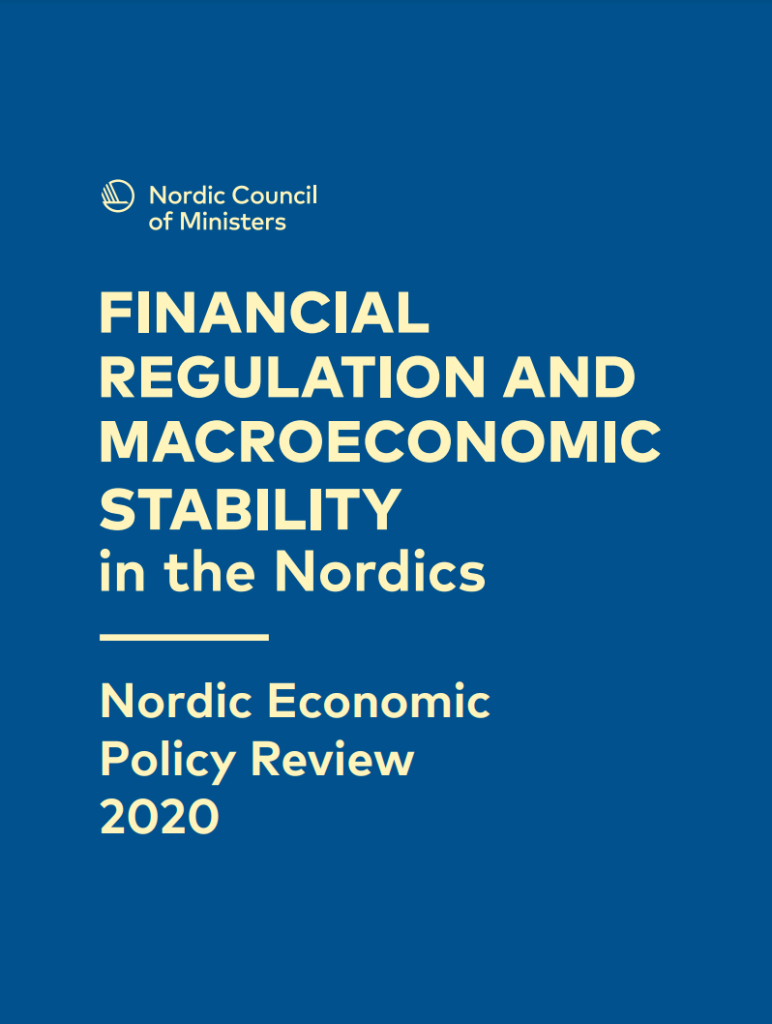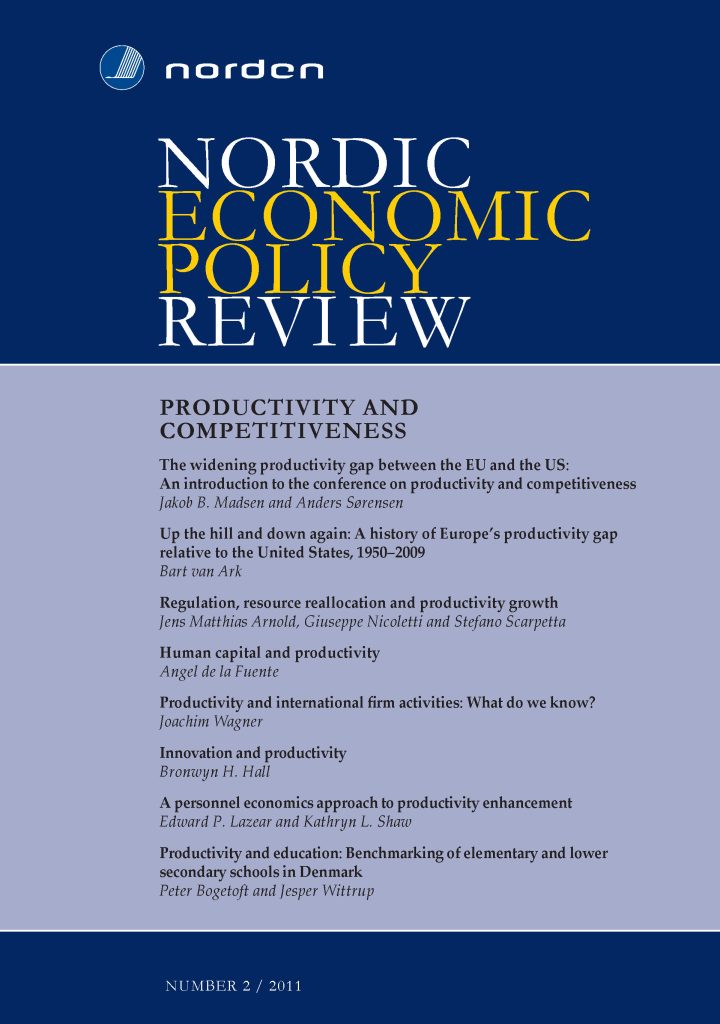
Previous reviews can be found in NordPub/DiVA for free, both as online publications and pdfs.

2022: Covid-19 Effects on the Economy in the Nordics
This issue of the Nordic Economic Policy Review surveys the economic repercussions of the COVID-19 pandemic and the health and economic policies introduced to minimise its impact in the Nordic countries. Although national policies were broadly similar, they also differed in many respects. Given that some enjoyed greater success than others, comparing different policies and their effects may yield valuable lessons for the future.

2021: Nordic Housing markets and Policies
This issue of Nordic Economic Policy Review is devoted to Nordic housing markets and housing policies. Nordic housing markets face more or less the same problems and challenges, but the way policies and regulations deal with them differs in many respects. Comparing policies, regulations and results across countries yields valuable lessons for policymakers. The work has been led and edited by Professor emeritus Harry Flam and Professor emeritus Peter Englund.

2020: Financial Regulation and Macroeconomic Stability in the Nordics
How well designed are the financial regulations imposed after the global financial crisis in 2008–09 and the subsequent euro crisis? Will the new bail-in rules work in a systemic crisis, or do we risk further costly bail-outs by governments? How does monetary policy influence household debt? Have macroprudential tools been well-calibrated? Answers to these questions are crucial for judging the risks that the current corona crisis might also trigger a new financial crisis.

2019: Climate Policies in the Nordics
The articles in the 2019 Nordic Economic Policy Review analyse how the Nordic countries can best contribute to international climate policy: How can the Nordics help raise the ambitions in the Paris Agreement? What is the effect of national policy on emissions regulated by the EU Emissions Trading System? Would it be cost-effective for the Nordic countries to pay for emission reductions elsewhere to a more significant extent? What role should be played by subsidies for green technology? Should Norway put more emphasis on supply-side policies, that is, limiting future extraction of oil and gas?

2018: Increasing Income Inequality in the Nordics
The contributions document how income inequality in the Nordics in various dimensions has increased over recent decades. These developments are put in an international context. Developments in Denmark, Finland, Norway and Sweden are compared. Important aspects analysed in detail are the overall inequality of both market and disposable incomes, the redistribution through the tax and transfer system as well as through the provision of government welfare services, the importance of demographic factors, the developments of relative poverty and top income shares, and gender inequality.

2017: Labour Market Integration in the Nordic Countries
What can we learn from each other and others? Since the mid-eighties, the Nordic countries have received a high influx of refugees relative to the population size. Currently, these countries receive large numbers of refugees, notably from the Middle East. Existing studies exploiting the rich administrative registers in the Nordic countries have shown that the speed of labour market assimilation of immigrants from non-Western countries in the Nordic welfare states is slow. However, few studies distinguish between refugees and non-refugee immigrants from Non-Western countries.

2015: Whither the Nordic Welfare Model?
The Nordic Welfare Model frequently attracts international attention and is by many seen as a social model to be inspired by or even to be copied. In recent years, the “Nordic Way” has been a topic for discussion at the World Economic Forum. It has even appeared on the cover of The Economist under the heading “The next supermodel”. Somewhat paradoxically, however, the debate in the Nordic countries often features scepticism on the model's future. Does this reflect a timely concern voiced by those best placed to see what is going on, or are the doubts on the contrary a result of model-hypochondria?

2014: Consequences of youth unemployment and effectiveness of policy interventions
Youth unemployment has increased disproportionally in many European countries due to financial and economic crises. Although previous crises have also affected youth more than older workers, the concern this time is that, in the light of the depth and duration of the crisis, youth may to a more significant extent than previously end up being unemployed for an extended period which, in turn, may have adverse effects on their future employment prospects. In this issue of the Nordic Economic Policy Review, we focus on the consequences of youth unemployment and on evaluating the effectiveness of different labour market policies targeted toward youth.

2013: Globalization, labour market institutions and wage structure
Globalization is increasing on every front. Goods and services, capital, intermediate goods, and workers are now flowing across borders at an increasing speed, making the national economy smaller relative to the world market. The recent surge in globalization appears to challenge the economic systems in the developed world. How should one reap the benefits without being exposed to higher adjustment costs? How can we prevent an unequal distribution of gains and losses? Are the economic and political challenges less in the small open economies of the Nordic countries?

2012: Challenges in health care financing and provision
Good health is highly valued and a prerequisite for benefiting from a rising income level. Hence, the willingness to pay for improved health is likely to rise sharply with income, and so is the willingness to pay for health care, since health care is a vital input in the production of health. As people get richer and consumption rises, the marginal utility of consumption falls rapidly. Furthermore, the marginal utility of life extension does not decline and spending on health to extend life allows individuals to purchase additional periods of utility. As a result, the optimal composition of total spending shifts toward health, and the health share grows along with income.

2011: Labour Market Consequences of the Economic Crisis
This second volume of the Nordic Economic Policy Review includes six papers dealing with various labour market aspects of the economic crisis in 2008-2010. More specifically, the following topics are covered: Youth unemployment, Employment protection, Unemployment insurance, Short-term work schemes, Active labour market programmes, and regular education as a stabilisation policy tool.

2011: Productivity and competitiveness
This paper introduces the papers presented at the Nordic Conference on Competitiveness and Productivity and discusses them concerning the widening productivity gap between Europe and the US since 1995. It is shown that productivity growth is driven by R&D, human capital and production efficiencies such as human resource management, government regulation, competition and openness. It is concluded that potential explanations for the widening productivity gap are low investment, inefficient use of information technology, compressed wage structure and deregulation of the otherwise regulated labour market in Europe.

2010: Economics of Education
Education influences the growth prospects of a country and causes differences in individual labour market success. The individual wage return to a year of schooling varies somewhat over countries and periods but is typically estimated to be between 4 and 10 per cent. Analogously, the effect of education and growth varies somewhat over studies, but it is of the same magnitude as the individual wage return. Moreover, some researchers argue that these wage returns underestimate the complete return to schooling since more educated individuals (it is argued) have more enjoyable lives along various dimensions.

2010: Fiscal Consequences of the Crisis
In the immediate aftermath of the financial crisis, there were strong calls for a more active fiscal stabilization policy. Although monetary policy turned very expansionary, via conventional and less conventional instruments, this was insufficient to prevent sharp reductions in output and employment. The automatic fiscal stabilizers were at work, but this was also seen as insufficient to stabilize the economy. Accordingly, many countries undertook discretionary fiscal policy changes to dampen the consequences of the crisis on output and employment.